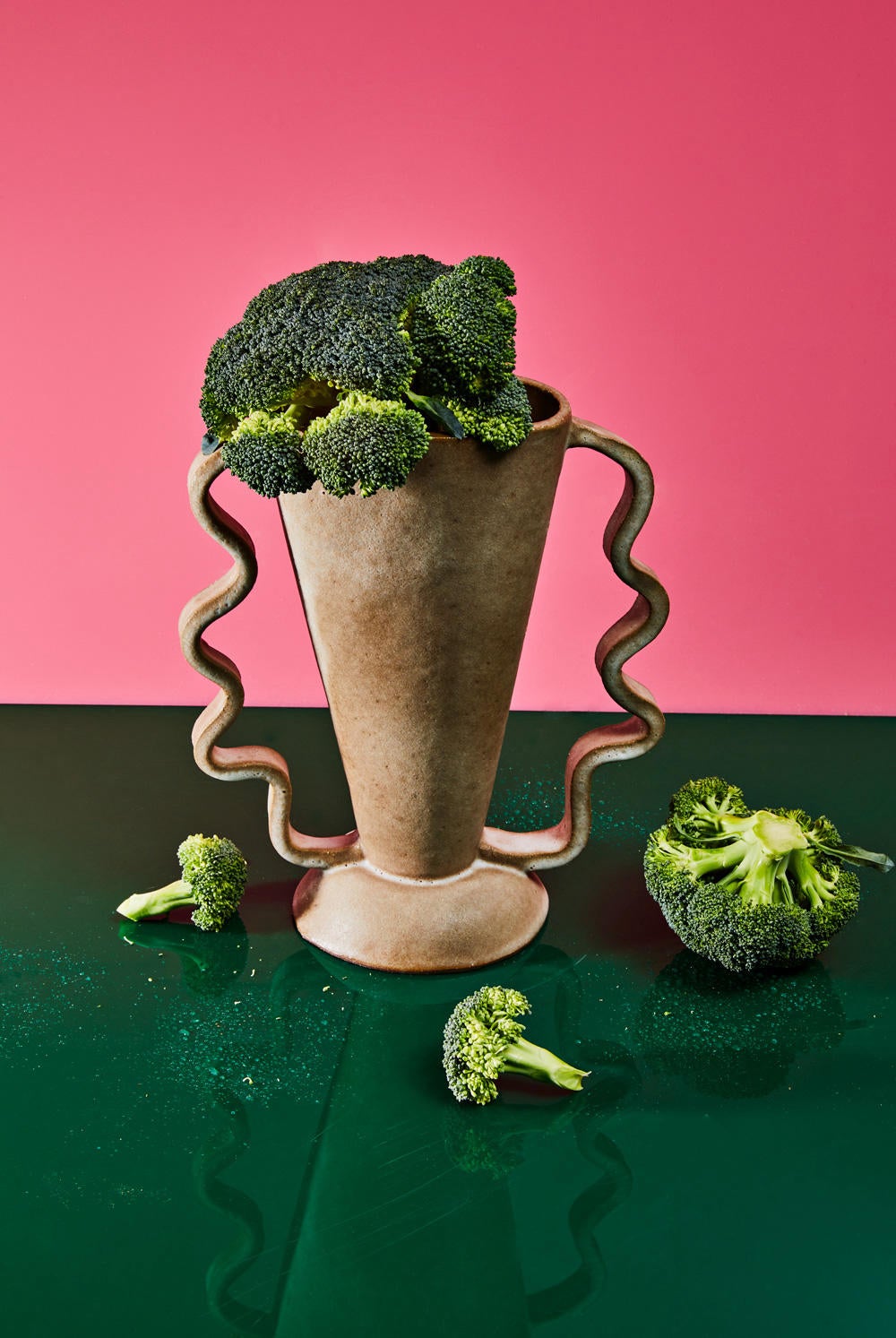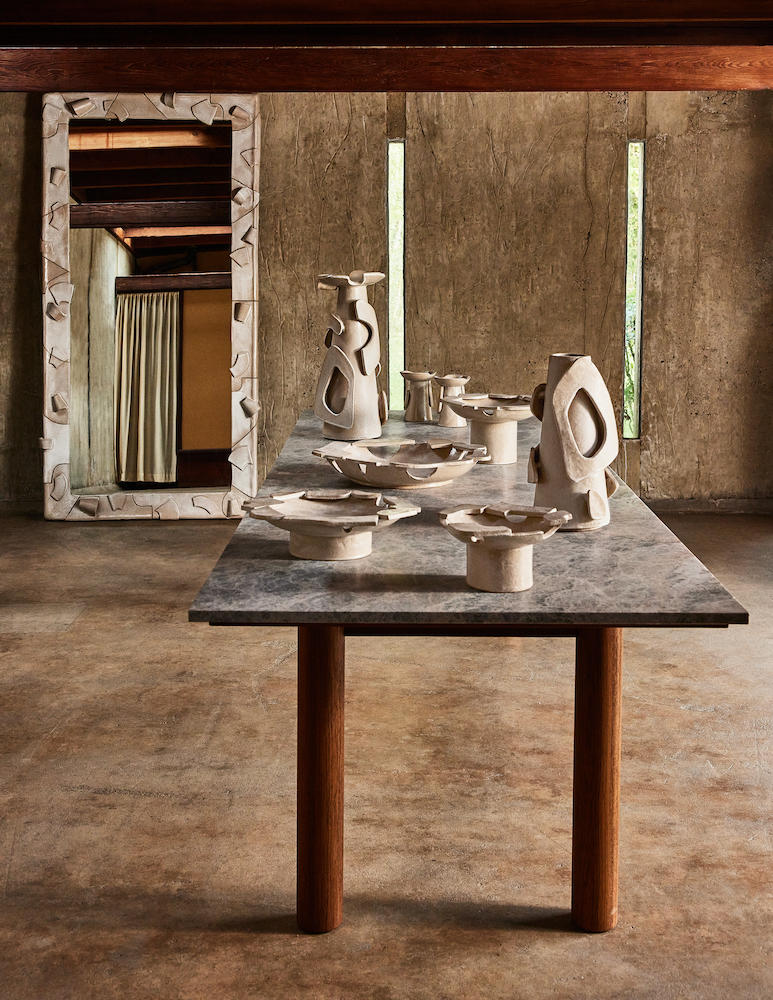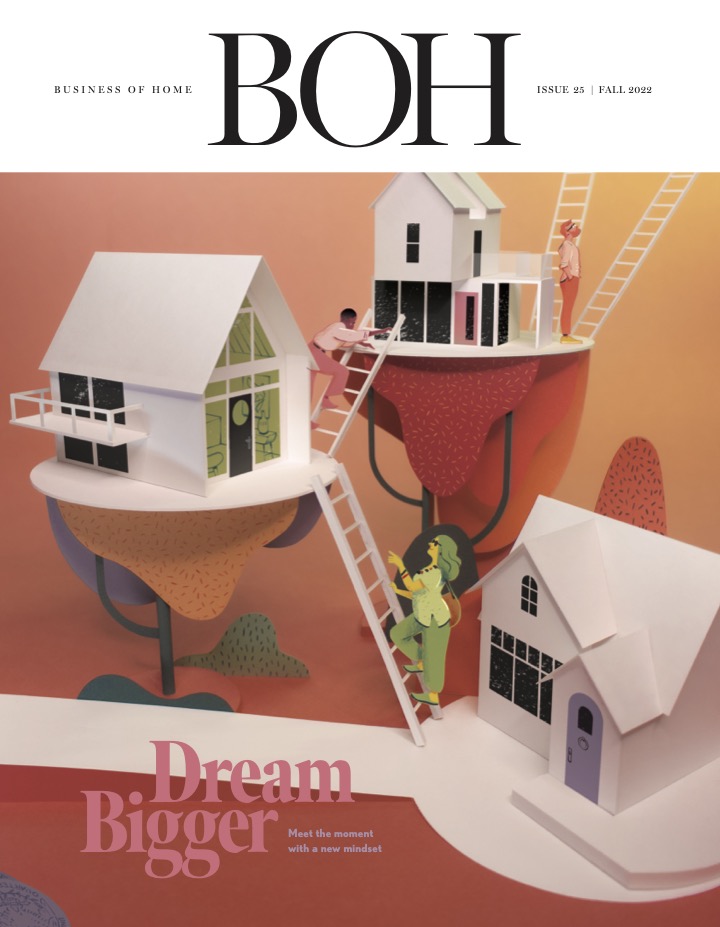
Morgan Peck is moved by the duality of pottery. While some ceramists focus solely on either the form or the function of the objects they create, the Los Angeles artist finds inspiration in the places where architecture and ornamentation intersect. “I like where practical structural elements meet frivolous and decorative ones,” she tells Business of Home.
Growing up in Gig Harbor, Washington, Peck sometimes found that art was a little too close to home: Her mother taught drawing and painting at her high school. “To avoid taking her class, I took every ceramics class twice,” she says. “That’s when I first fell in love with clay, but I took a 10-year break from it while in college and through lots of different jobs after.” Working an especially stressful gig as an art handler in Los Angeles, she decided to take a ceramics class at the Barnsdall Art Center to unwind in her downtime. “As soon as I touched clay again, I knew it was what I was supposed to be doing,” she says.
In 2012, Peck bought a home in the Jefferson Park area of Los Angeles and opted to convert the garage into a backyard studio. It was here that she began experimenting with different types of ceramic vessels, particularly vases she sculpted from slabs of clay. “I was searching for a way to balance out the heavy forms, so I incorporated elements of Venetian glass and Minoan vases, and started to make vessels with thin wavy arms coming out of the sides or top,” she says.

These modified vessels would eventually become the prototype for her bestselling vase, the Stretch, a cone-shaped confection with undulating arms that simultaneously reads Memphis Milano and centuries-old antique. “After selling a few, my confidence was totally boosted,” she says. “I started taking it seriously as a profession.”
For Peck, the design process is all trial and error. Starting with a flat slab of clay, she uses templates (that she says are similar to “sewing patterns”) in lieu of molds to carve out distinct shapes she then sculpts into a base. “Clay is so soft that the shape will usually collapse, but I enjoy working within those parameters to see what the clay wants to do and if I can use it as part of the design,” she explains. Though her ceramic creations undoubtedly moonlight as mini works of art, Peck says functionality is key in her designs: “I intentionally avoid making a lot of stuff because I feel the way I can make it would not be practical. However, I mostly think of form. I want my vases to look good without flowers in them, so they can still be enjoyed when not in use.”
Color also plays an important role. “I tend to use the same forms in my designs, so color is where I get to have fun,” says Peck. “Making glaze is a complicated process that takes a lot of time to test—so I try to just keep an open mind and see which hues look best without any goals or expectations.”

In April, Kelly Wearstler commissioned Peck to create a collection of dinnerware and decor objects inspired by some of the custom pieces the artist has crafted for the A-list designer’s projects. The collaboration, called Contour, features 11 handmade pieces punctuated by geometric embellishments and earthy glazed finishes, including bowls, candleholders, dishes, platters and mirrors. “The pieces are bigger and more intricate than anything else I’ve made,” she says of the series. “Working with Kelly allowed the design to go in a direction that I might not have taken on my own.”
Currently, Peck is hard at work on a large-scale wall installation—which will include more than 50 individual ceramic pieces—for Cara Cara, the rooftop restaurant at the Proper Hotel in Los Angeles. “I also plan on making more mirrors in the future,” she says. “I love the possibility of bringing texture and materiality to them. Mirrors are so cold and hard, so it creates a great juxtaposition.”
If you want to learn more about Morgan Peck, visit her website or follow her on Instagram.
Homepage photo: Selections from the Contour collection by Morgan Peck for Kelly Wearstler | The Ingalls




























